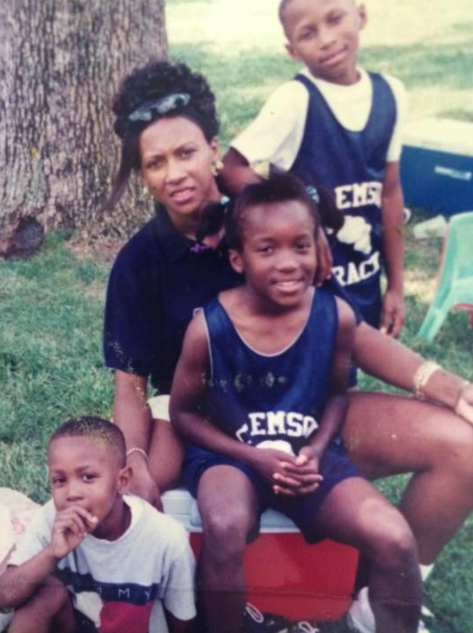
A piece of cardboard sold for $5.2 million this week.
The craziest part?
"It was a steal."
Time for a thread 👇👇👇
The craziest part?
"It was a steal."
Time for a thread 👇👇👇
1) First, some background...
In 2020, more than $20 trillion in economic stimulus was allocated globally due to COVID-19.
The result?
Investors flocked to inflation-hedged assets like gold, real estate, bitcoin, art, and sports trading cards.
Yes, even sports trading cards.
In 2020, more than $20 trillion in economic stimulus was allocated globally due to COVID-19.
The result?
Investors flocked to inflation-hedged assets like gold, real estate, bitcoin, art, and sports trading cards.
Yes, even sports trading cards.
2) For example, in August 2020, a signed 1-of-1 Mike Trout rookie card sold for a record $3.94 million.
Even more interesting?
Less than 6 months later, the record has been shattered again.
This week, entrepreneur Rob Gough bought a 1952 Mickey Mantle PSA 9 card for $5.2M.
Even more interesting?
Less than 6 months later, the record has been shattered again.
This week, entrepreneur Rob Gough bought a 1952 Mickey Mantle PSA 9 card for $5.2M.

3) What makes the card so expensive?
While it doesn’t have the same pedigree as a 1951 Mickey Mantle rookie card, the 1952 edition has an interesting backstory nonetheless.
Here's the quick version...
While it doesn’t have the same pedigree as a 1951 Mickey Mantle rookie card, the 1952 edition has an interesting backstory nonetheless.
Here's the quick version...
4) Topps produced 2x the expected amount of cards given Mantle's popularity, but they made one giant mistake — they released them late in the season.
Within months, all the kids wanted new cards — they couldn't give them away.
What they did next changed the value forever.
Within months, all the kids wanted new cards — they couldn't give them away.
What they did next changed the value forever.
5) After trying to sell the cards for a decade, Topps executives loaded up a barge & dumped thousands of leftovers in the Hudson River.
This decision, along with kids losing cards, damaging them & throwing them out, has decimated existing supply — increasing the price over time.
This decision, along with kids losing cards, damaging them & throwing them out, has decimated existing supply — increasing the price over time.

6) How many of these cards exist today?
According to PSA, there are only six PSA 9’s & just three PSA 10’s in existence, which are worth $10M+ each.
Even more interesting?
Despite paying $5.2M—an 80% premium to what the card sold for in 2018—Rob Gough believes he got "a steal”
According to PSA, there are only six PSA 9’s & just three PSA 10’s in existence, which are worth $10M+ each.
Even more interesting?
Despite paying $5.2M—an 80% premium to what the card sold for in 2018—Rob Gough believes he got "a steal”
7) Here's what Rob Gough said about the $5.2M price tag:
"My analysis showed this $5.2m price was highly undervalued. If you look at other less iconic cards, their values have more than 10X’d in the same time since the last sale of this card."
The craziest part?
He's right.
"My analysis showed this $5.2m price was highly undervalued. If you look at other less iconic cards, their values have more than 10X’d in the same time since the last sale of this card."
The craziest part?
He's right.
8) The surge in interest in sports trading cards may have picked up during the pandemic, but the asset has performed well for a decade.
Check this out…
Since 2008, the PWCC 500 Index—which tracks trading cards similar to the S&P 500—has an ROI of 270% vs. 160% for the S&P 500.
Check this out…
Since 2008, the PWCC 500 Index—which tracks trading cards similar to the S&P 500—has an ROI of 270% vs. 160% for the S&P 500.

9) Pandemic or not, the continued popularization of sports memorabilia & collectibles as an asset class is here to stay.
Why?
Because not only has the asset performed well during economic uncertainty—think 2008 & 2020—but venture capital is being poured into the marketplace.
Why?
Because not only has the asset performed well during economic uncertainty—think 2008 & 2020—but venture capital is being poured into the marketplace.
10) Over the last few years, the collectibles space has seen an influx of cash designed to build out necessary ancillary services.
Examples include fractional share companies like Rally Rd., secondary trading platforms like StarStock, and portfolio management tools like ALT.
Examples include fractional share companies like Rally Rd., secondary trading platforms like StarStock, and portfolio management tools like ALT.

11) In the end, as ancillary services continue to get built out & grading companies like Collectors Universe improve after being acquired, we will only see more investors enter the space.
Still think it's dumb?
Think again...
After all, no one questions the value of a Picasso.
Still think it's dumb?
Think again...
After all, no one questions the value of a Picasso.
12) If you enjoyed this thread, you should:
1. Follow me, I tweet cool sports business stories every day.
2. Subscribe to my free daily newsletter where I give a detailed analysis on topics involving the money and business behind sports.
readhuddleup.com
1. Follow me, I tweet cool sports business stories every day.
2. Subscribe to my free daily newsletter where I give a detailed analysis on topics involving the money and business behind sports.
readhuddleup.com
Also, don't forget @AthleticBrewing is the reason I'm able to create sports business content full-time.
If you want to support me, buy some beer - it's really great stuff.
Use code "JOE25" for 25% off at athleticbrewing.com
If you want to support me, buy some beer - it's really great stuff.
Use code "JOE25" for 25% off at athleticbrewing.com
• • •
Missing some Tweet in this thread? You can try to
force a refresh









